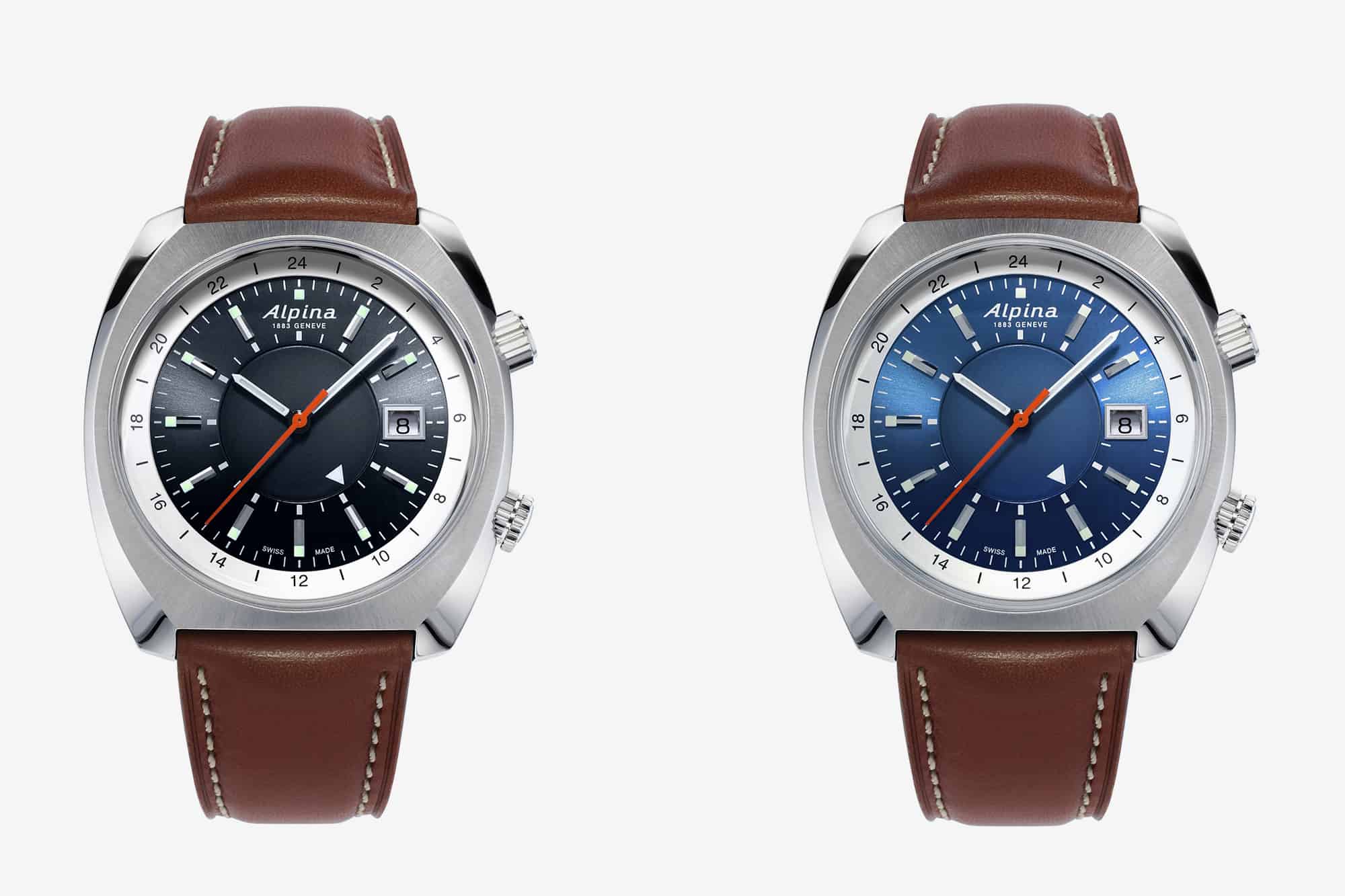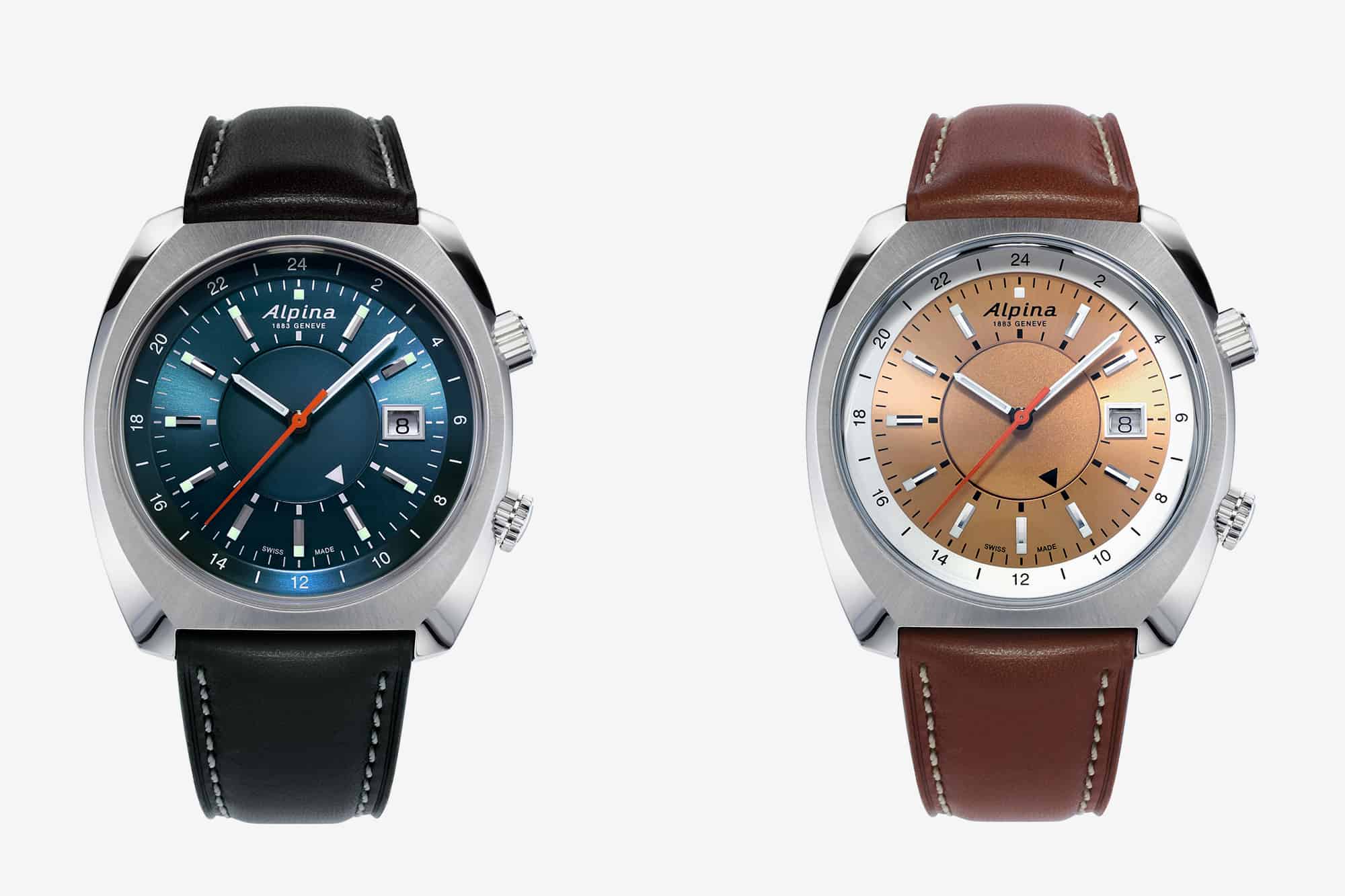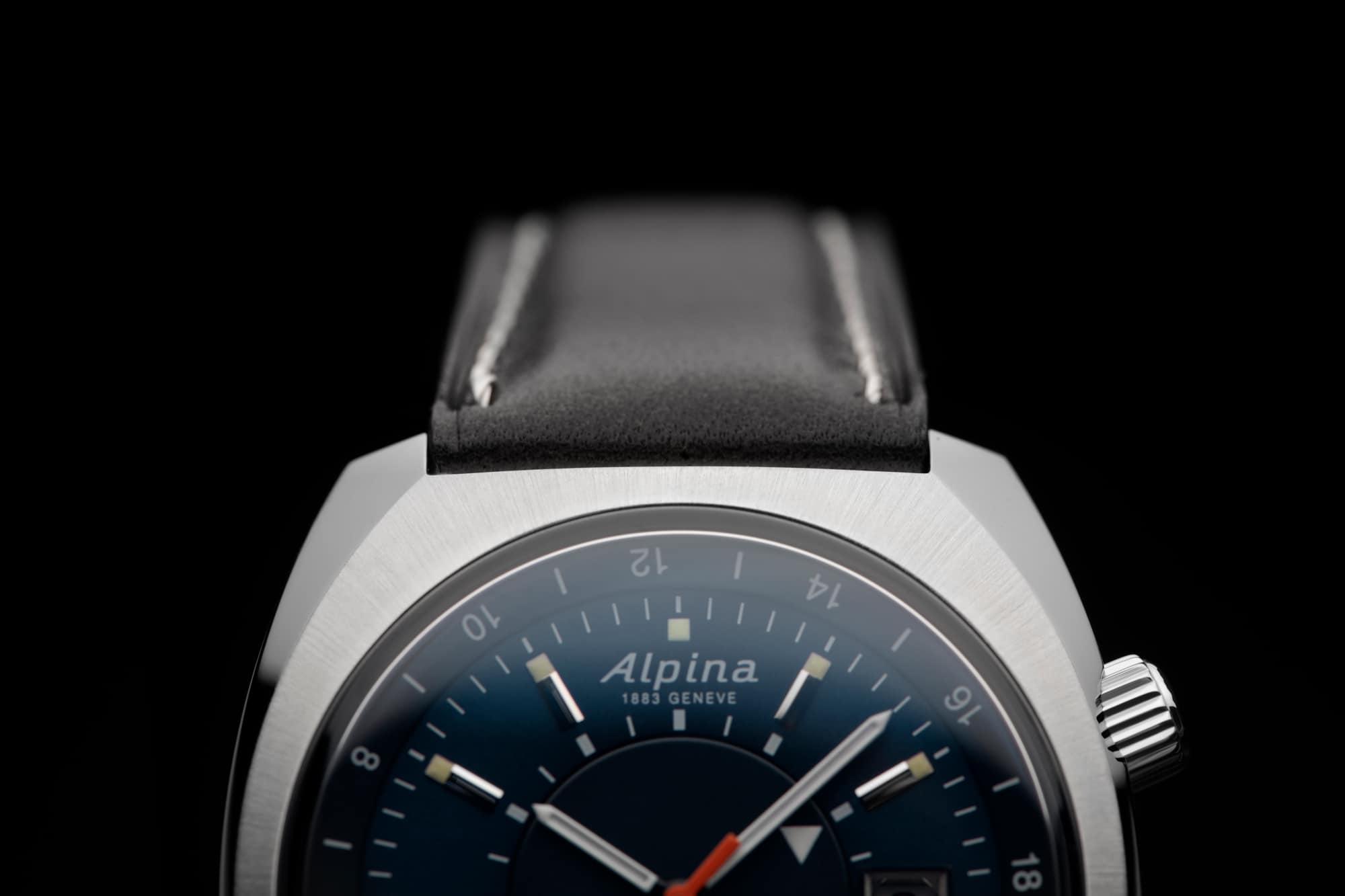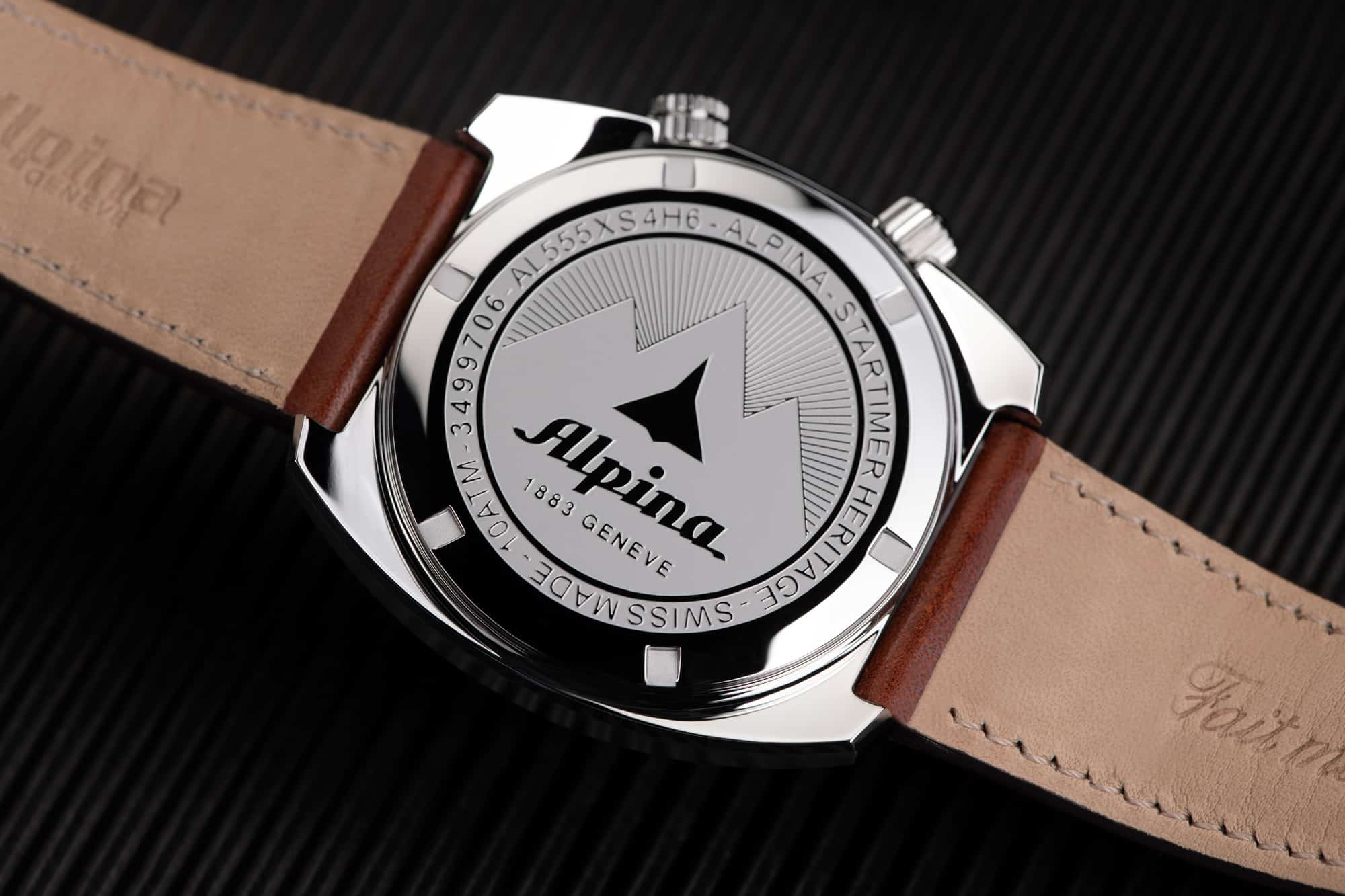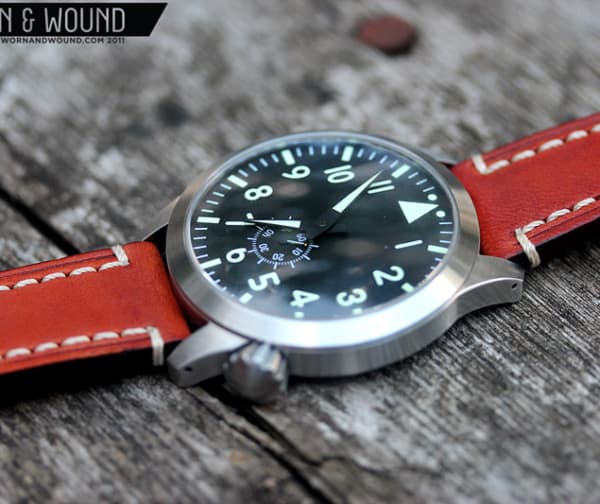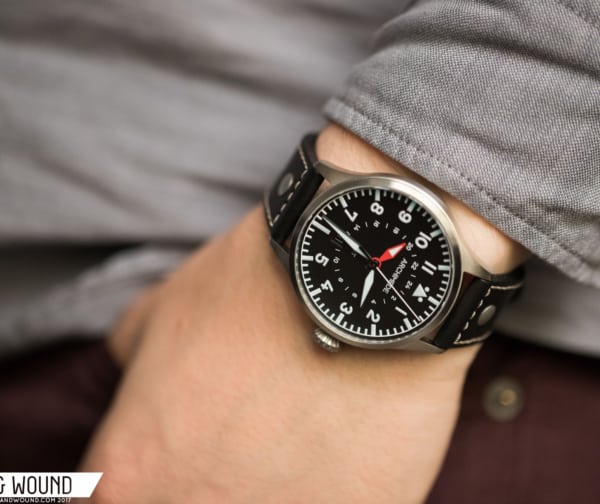Alpina has just announced four new Startimer Pilot Heritage models for the US market. These are big, bold, funky aviation watches that measure 42 millimeters across and 12 millimeters deep. With their beefy, multi-faceted, cushion style cases and four bold colorways, these watches are never going to be a sheepish choice on anyone’s wrist.
The copper, dark gray, and light blue dials ship on light brown leather, and the fourth navy dial comes on black leather. The main hands and applied markers are in steel, while the seconds hand is bright orange on all four models, and, at least in photos, every colorway “works.”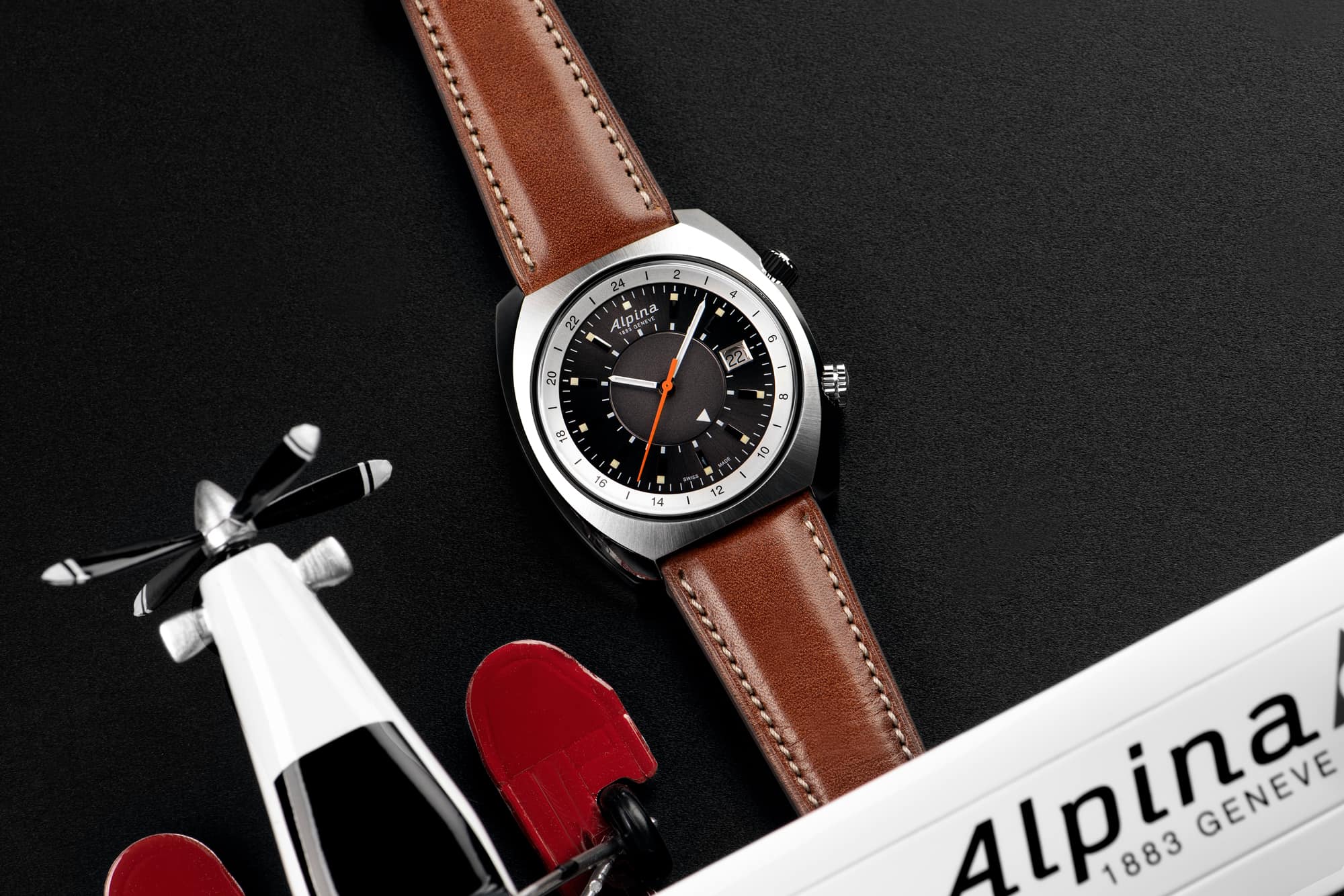 The movement is Cal. AL-555, an in-house-modified Sellita engine that features a true GMT function—meaning that one can jump the hour hand to adjust local time while the GMT hand stays put to your chosen home reference. The jumping hour hand is usually preferred over other GMT configurations (such as the ETA 2893-2, which only provides standard setting of the local time).
The movement is Cal. AL-555, an in-house-modified Sellita engine that features a true GMT function—meaning that one can jump the hour hand to adjust local time while the GMT hand stays put to your chosen home reference. The jumping hour hand is usually preferred over other GMT configurations (such as the ETA 2893-2, which only provides standard setting of the local time).
The Startimer Heritage GMT’s design actually dates back to a similarly styled alarm watch from Alpina’s back catalog, but here the inner rotating disc is the GMT hand, while the second crown advances the inner bidirectional 24-hour bezel for tracking a third timezone. The rotating disc (or GMT hand) remains alarm-like in appearance (a la Jaeger-LeCoultre Memovox), while the second crown and rotating inner bezel are reminiscent of a dual-crown Super Compressor. All together, this watch is a playful mash-up of styles and functions.









 Featured Videos
Featured Videos





